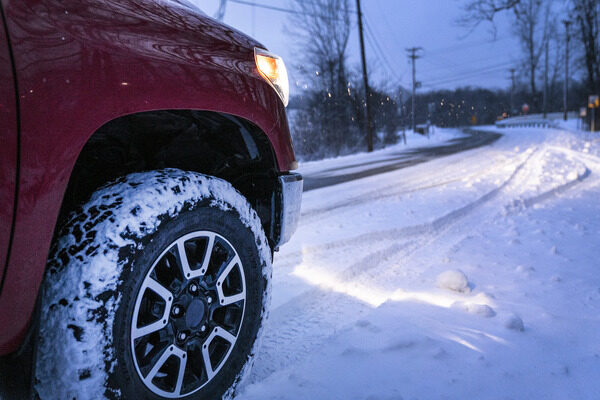
Antifreeze sounds pretty self-explanatory, right? You might think it’s just something that keeps your car from freezing in the winter months, but there’s more to it than that. Antifreeze keeps your car from overheating on scorching summer days and keeps your vehicle running smoothly despite extreme weather conditions.
What is antifreeze?
Antifreeze, also known as engine coolant, is a colored liquid that plays a crucial role in regulating your car’s engine temperature. This fluid is a mixture of distilled water with additives and a base product, typically monoethylene glycol (MEG) or monopropylene glycol (MPG). Antifreeze raises the boiling point of any water-based liquid, helping prevent your engine from overheating during those hot summer drives. It’s a vital component in maintaining the health and efficiency of your car. [1]
How does antifreeze work?
Antifreeze is pumped through the engine and the heater core, where it absorbs excess heat. It’s like a sponge soaking up all that unwanted warmth. Then it carries the absorbed heat away from the engine and releases it through the radiator. Antifreeze also acts as a lubricant in your engine, reducing friction that can damage your engine. It also prevents corrosion in the engine. [1]
Are anti-freeze and coolant the same thing?
Antifreeze is a chemical solution, often ethylene glycol- or propylene glycol-based. Its primary function is to lower the freezing point of the fluid in your engine’s cooling system, preventing it from freezing in cold weather. Coolant is a mixture, typically a 50-50 split between antifreeze and water. Coolant not only prevents freezing, but it also raises the boiling point of the fluid in your car’s radiator, preventing overheating in hot weather. Essentially, all antifreeze are coolants, but not all coolants are antifreeze. The term “coolant” is broader, describing any fluid that helps regulate the temperature within your engine. [2]
When should you change antifreeze?
The frequency of changing antifreeze depends on the type of vehicle you have and the type of antifreeze you use. The general rule of thumb is to change it at least every 30,000 miles, or every 3 to 5 years. Here are the signs that it’s time to replace your antifreeze:
- Change in color: If your antifreeze changes color significantly, it may mean it’s time for a change.
- Car overheating: If your vehicle is overheating frequently, it may be a sign that your antifreeze isn’t doing its job properly.
- Coolant level: If the coolant level is frequently low even after topping off, it might be a sign of a leak. You may want to have it looked at by a professional. [3]
How to put antifreeze in a car
Changing your car’s antifreeze can be done either by yourself or at an auto shop, depending on your comfort level with automotive maintenance tasks and your access to necessary tools and equipment.
If you’re experienced with basic car maintenance tasks and have the required tools, you may choose to change the antifreeze yourself. If you notice your antifreeze is low and you want to top it off yourself, try following the steps below:
- Park your car and let the engine cool completely.
- Check whether your antifreeze is premixed, and if it isn’t, dilute it with a 50-50 ration of distilled water to antifreeze. Using unmixed/undiluted antifreeze to your car can result in critical damage to your radiator. If you’re unsure about this step, consider taking your car to a professional.
- Locate and open the coolant tank.
- Using a funnel, pour the mixture into the coolant tank until it reaches the fill line.
- Secure the cap back on the coolant tank and tighten until you feel it click. [1]
However, if you’re uncomfortable working on your car or lack the necessary tools and expertise, it may be safer and more convenient to change the antifreeze at an auto shop. If you’re unsure about performing the task yourself, it’s always a good idea to seek professional help to ensure the job is done properly.
Remember that regularly checking and maintaining the correct level of antifreeze in your vehicle is critical for its performance and longevity. Be mindful of the signs indicating that it’s time to top off or replace the antifreeze.
Sources:
[1] “What Is Antifreeze,” Tom Kadleck Kia, tomkadleckia.com/what-is-antifreeze.html (accessed January 2024).
[2] “Antifreeze: Does Your Car Really Need It?” Total Energies, totalenergies.eg/en/newsroom/blog/antifreeze-does-your-car-really-need-it (accessed January 2024).
[3] “Warning Signs Your Car Needs a Coolant Flush,” Fort Myers Mitsubishi, fortmyersmitsubishi.com/blog/warning-signs-your-car-needs-a-coolant-flush (accessed August 2022).
Disclaimer:
The information included here is designed for informational purposes only. It is not legal, tax, financial or any other sort of advice, nor is it a substitute for such advice. The information may not apply to your specific situation. We have tried to make sure the information is accurate, but it could be outdated or even inaccurate in parts. It is the reader’s responsibility to comply with any applicable local, state or federal regulations. Nationwide Mutual Insurance Company, its affiliates and their employees make no warranties about the information nor guarantee of results, and they assume no liability in connection with the information provided. Nationwide and the Nationwide N and Eagle are service marks of Nationwide Mutual Insurance Company. © 2024 Nationwide



